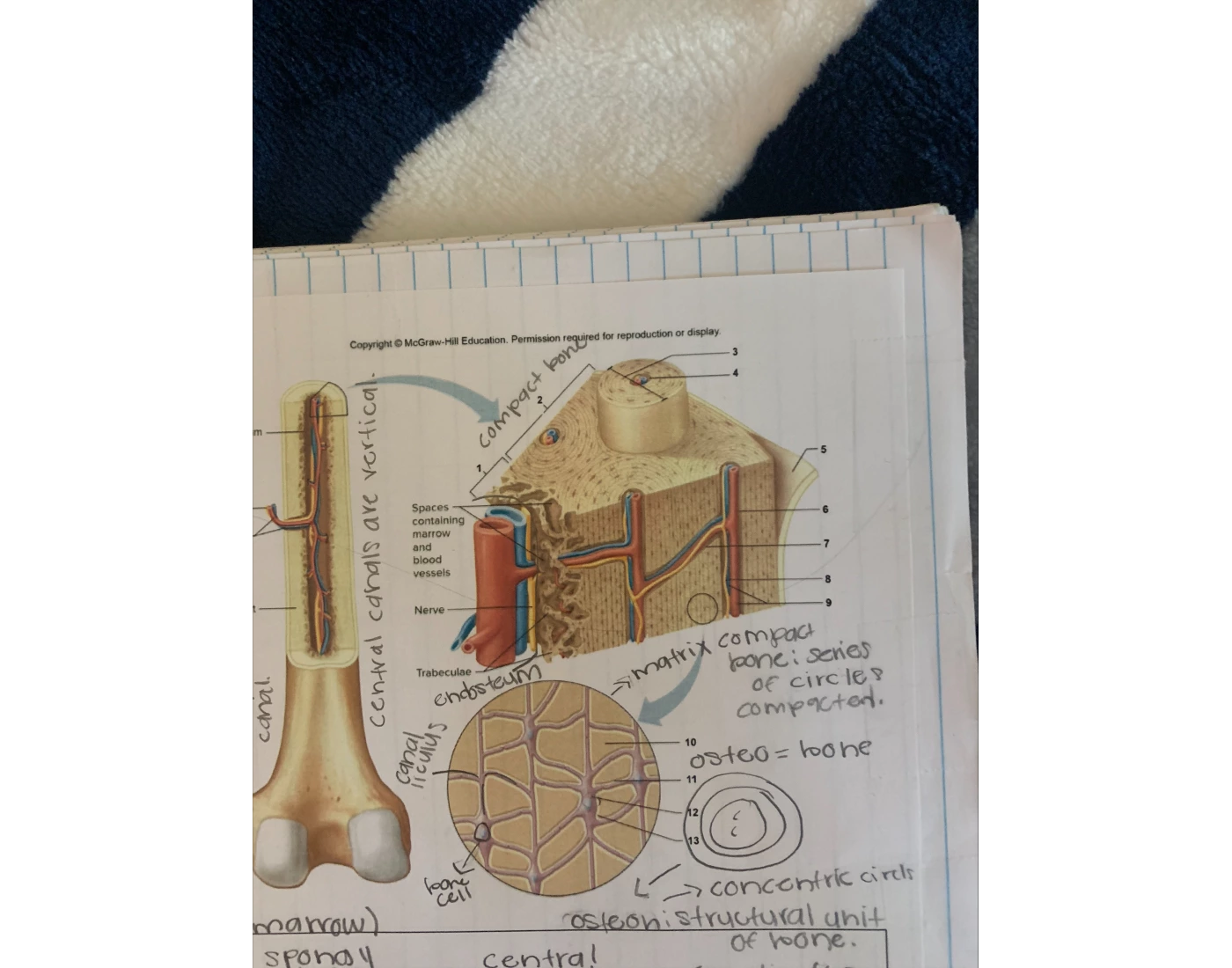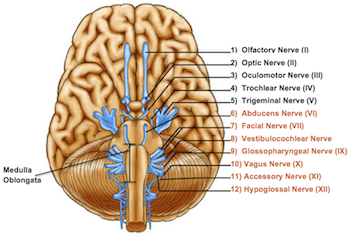What Is The Medullary Cavity

In the intricate architecture of bones, the medullary cavity stands as a central chamber, housing vital components that contribute to skeletal health and function. This hollow region, often overlooked in discussions of bone anatomy, plays a pivotal role in hematopoiesis, mineral storage, and structural support. To comprehend its significance, we must delve into the depths of bone biology, exploring the medullary cavity’s composition, functions, and clinical implications.
Anatomy of the Medullary Cavity
The medullary cavity, also known as the marrow cavity, is a cylindrical, hollow space located within the diaphyses (shafts) of long bones, such as the femur, humerus, and tibia. This cavity is surrounded by a thin layer of compact bone, which provides structural integrity and protection to the delicate contents within. In cross-section, the medullary cavity appears as a circular or oval region, occupied by bone marrow, a soft, gelatinous tissue.
Bone Marrow: The Resident Tissue
Bone marrow, the primary occupant of the medullary cavity, is a highly vascular and cellular tissue, responsible for critical physiological processes. There are two distinct types of bone marrow: red (hematopoietic) and yellow (fatty).
Red Bone Marrow
Red bone marrow, rich in hematopoietic stem cells, is the site of blood cell production, or hematopoiesis. This process involves the differentiation and maturation of stem cells into various blood cell lineages, including:
- Erythrocytes (red blood cells): Responsible for oxygen transport
- Leucocytes (white blood cells): Crucial for immune function
- Platelets: Essential for blood clotting
In adults, red bone marrow is primarily found in the flat bones, such as the pelvis, sternum, and cranium, as well as in the epiphyses (ends) of long bones. However, during fetal development and early childhood, red bone marrow occupies the entire medullary cavity.
Yellow Bone Marrow
Yellow bone marrow, composed mainly of adipocytes (fat cells), serves as an energy reserve and provides cushioning to the bone. This type of marrow is prevalent in the diaphyses of long bones, where it replaces red bone marrow as individuals age. The conversion of red to yellow bone marrow is a gradual process, beginning in childhood and continuing throughout life.
Functions of the Medullary Cavity
The medullary cavity and its resident bone marrow contribute to several essential physiological functions:
- Hematopoiesis: As mentioned earlier, red bone marrow is the primary site of blood cell production, ensuring a continuous supply of erythrocytes, leucocytes, and platelets.
- Immune Function: Bone marrow-derived hematopoietic stem cells give rise to immune cells, such as lymphocytes and macrophages, which play critical roles in defending the body against pathogens.
- Mineral Storage: The medullary cavity serves as a reservoir for essential minerals, including calcium and phosphorus, which are vital for maintaining bone density and overall skeletal health.
- Endocrine Function: Recent research has highlighted the role of bone marrow in producing hormones, such as osteocalcin, which regulates glucose metabolism and insulin secretion.
Clinical Significance
Disorders affecting the medullary cavity and bone marrow can have severe consequences for human health. Some notable conditions include:
- Leukemia: A type of cancer that originates in the bone marrow, leading to the overproduction of abnormal white blood cells.
- Anemia: A condition characterized by a deficiency in red blood cells, often resulting from impaired hematopoiesis in the bone marrow.
- Osteoporosis: A metabolic bone disease marked by low bone density, which can compromise the structural integrity of the medullary cavity and surrounding bone tissue.
- Multiple Myeloma: A cancer of plasma cells, which accumulate in the bone marrow, disrupting normal hematopoiesis and bone remodeling.
It is essential to recognize that the medullary cavity's health is intricately linked to overall skeletal well-being. Maintaining a balanced diet, rich in calcium, vitamin D, and other essential nutrients, can support bone marrow function and prevent disorders associated with the medullary cavity.
Diagnostic Techniques
To assess the health of the medullary cavity and bone marrow, healthcare professionals employ various diagnostic techniques, including:
- Bone Marrow Aspiration: A procedure in which a small sample of bone marrow is extracted, typically from the pelvis or sternum, for laboratory analysis.
- Bone Marrow Biopsy: A more invasive procedure, involving the removal of a small core of bone and bone marrow tissue, which provides detailed information about the cellular composition and architecture of the medullary cavity.
- Imaging Studies: Techniques such as X-rays, CT scans, and MRI can provide valuable insights into the structure and density of bones, including the medullary cavity.
The medullary cavity, a vital component of bone anatomy, plays a crucial role in hematopoiesis, mineral storage, and immune function. Understanding its structure, functions, and clinical significance is essential for maintaining skeletal health and preventing disorders associated with the bone marrow.
Comparative Analysis: Medullary Cavity in Different Species
A comparative analysis of the medullary cavity across species reveals interesting adaptations to diverse lifestyles and environmental conditions. For instance:
| Species | Medullary Cavity Characteristics |
|---|---|
| Humans | Diaphyses of long bones, primarily yellow bone marrow in adults |
| Birds | Extensive medullary cavity in long bones, adapted for flight and reduced weight |
| Marine Mammals | Reduced medullary cavity, adapted for buoyancy control and diving |

This comparative approach highlights the remarkable diversity of the medullary cavity and its adaptations to different physiological demands.
Future Research Directions
As our understanding of the medullary cavity and bone marrow continues to evolve, future research directions may include:
- Regenerative Medicine: Investigating the potential of bone marrow-derived stem cells for tissue engineering and regenerative therapies.
- Cancer Research: Exploring the underlying mechanisms of bone marrow disorders, such as leukemia and multiple myeloma, to develop targeted therapies.
- Bone Health: Examining the interplay between the medullary cavity, bone marrow, and skeletal health to prevent and treat osteoporosis and other metabolic bone diseases.
What is the primary function of the medullary cavity?
+The primary function of the medullary cavity is to house bone marrow, which is responsible for hematopoiesis (blood cell production), immune function, and mineral storage.
How does the medullary cavity change with age?
+With age, the medullary cavity undergoes a gradual conversion of red bone marrow to yellow bone marrow, resulting in a decrease in hematopoietic activity and an increase in fatty tissue.
What are the clinical implications of medullary cavity disorders?
+Medullary cavity disorders, such as leukemia and anemia, can lead to severe health consequences, including impaired immune function, blood cell deficiencies, and skeletal fragility.
Can the medullary cavity be visualized using imaging studies?
+Yes, imaging techniques such as X-rays, CT scans, and MRI can provide valuable insights into the structure and density of the medullary cavity and surrounding bone tissue.
What is the role of the medullary cavity in mineral storage?
+The medullary cavity serves as a reservoir for essential minerals, including calcium and phosphorus, which are vital for maintaining bone density and overall skeletal health.
In conclusion, the medullary cavity is a complex and dynamic structure, essential for maintaining skeletal health and overall physiological function. By exploring its anatomy, functions, and clinical significance, we can gain a deeper understanding of the intricate relationships between bone marrow, hematopoiesis, and immune function. As research continues to unveil the secrets of the medullary cavity, we may uncover new therapeutic strategies for treating bone marrow disorders and promoting skeletal well-being.
While the medullary cavity plays a crucial role in maintaining health, its susceptibility to disorders and diseases highlights the need for continued research and innovative treatments. By weighing the benefits of a healthy medullary cavity against the risks associated with its dysfunction, we can develop targeted interventions to support skeletal health and overall well-being.
Ultimately, the medullary cavity serves as a testament to the remarkable complexity and adaptability of the human body, reminding us of the intricate interplay between structure, function, and physiology.


